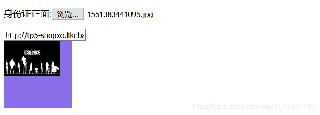Spring boot集成Kafka消息中間件代碼實(shí)例
一.創(chuàng)建Spring boot項(xiàng)目,添加如下依賴
<dependency> <groupId>org.springframework.boot</groupId> <artifactId>spring-boot-starter-web</artifactId> </dependency> <dependency> <groupId>org.projectlombok</groupId> <artifactId>lombok</artifactId> <optional>true</optional> </dependency> <!-- https://mvnrepository.com/artifact/org.springframework.kafka/spring-kafka --> <dependency> <groupId>org.springframework.kafka</groupId> <artifactId>spring-kafka</artifactId> </dependency> <!-- https://mvnrepository.com/artifact/org.apache.kafka/kafka-clients --> <dependency> <groupId>org.apache.kafka</groupId> <artifactId>kafka-clients</artifactId> </dependency> <dependency> <groupId>com.alibaba</groupId> <artifactId>fastjson</artifactId> <version>1.2.41</version> </dependency>
二.配置文件
server.port=4400
#kafka配置#============== kafka ===================# 指定kafka 代理地址,可以多個(gè)spring.kafka.bootstrap-servers=192.168.102.88:9092# 指定默認(rèn)消費(fèi)者group idspring.kafka.consumer.group-id=jkafka.demo#earliest 當(dāng)各分區(qū)下有已提交的offset時(shí),從提交的offset開始消費(fèi);無提交的offset時(shí),從頭開始消費(fèi)#latest 當(dāng)各分區(qū)下有已提交的offset時(shí),從提交的offset開始消費(fèi);無提交的offset時(shí),消費(fèi)新產(chǎn)生的該分區(qū)下的數(shù)據(jù)#none topic各分區(qū)都存在已提交的offset時(shí),從offset后開始消費(fèi);只要有一個(gè)分區(qū)不存在已提交的offset,則拋出異常spring.kafka.consumer.auto-offset-reset=latestspring.kafka.consumer.enable-auto-commit=falsespring.kafka.consumer.auto-commit-interval=100# 指定消費(fèi)者消息key和消息體的編解碼方式spring.kafka.consumer.key-deserializer=org.apache.kafka.common.serialization.StringDeserializer spring.kafka.consumer.value-deserializer=org.apache.kafka.common.serialization.StringDeserializer
三.編輯消息實(shí)體
@Datapublic class Message implements Serializable{ /** * */ private static final long serialVersionUID = 2522280475099635810L; //消息ID private String id; //消息內(nèi)容 private String msg; // 消息發(fā)送時(shí)間 private Date sendTime;}
四.消息發(fā)送類
@Componentpublic class KfkaProducer { private static Logger logger = LoggerFactory.getLogger(KfkaProducer.class); @Autowired private KafkaTemplate<String, String> kafkaTemplate; public void send(String topic,Message message) { try { logger.info('正在發(fā)送消息...'); kafkaTemplate.send(topic,JSON.toJSONString(message)); logger.info('發(fā)送消息成功 ----->>>>> message = {}', JSON.toJSONString(message)); } catch (Exception e) { e.getMessage(); } }}
五.發(fā)現(xiàn)監(jiān)聽接收類
@Componentpublic class KfkaListener { private static Logger logger = LoggerFactory.getLogger(KfkaListener.class); @KafkaListener(topics = {'hello'}) public void listen(ConsumerRecord<?, ?> record) { Optional<?> kafkaMessage = Optional.ofNullable(record.value()); if (kafkaMessage.isPresent()) { Object message = kafkaMessage.get(); logger.info('接收消息------------ record =' + record); logger.info('接收消息----------- message =' + message); } }}
六.定時(shí)發(fā)送信息測試類
@EnableScheduling@Componentpublic class PublisherController { private static final Logger log = LoggerFactory.getLogger(PublisherController.class); @Autowired private KfkaProducer kfkaProducer; @Scheduled(fixedRate = 5000) public void pubMsg() { Message msg=new Message(); msg.setId(UUID.randomUUID().toString()); msg.setMsg('發(fā)送這條消息給你,你好啊!!!!!!'); msg.setSendTime(new Date()); kfkaProducer.send('hello', msg);; log.info('Publisher sendes Topic... '); }}
七.測試結(jié)果

以上就是本文的全部內(nèi)容,希望對大家的學(xué)習(xí)有所幫助,也希望大家多多支持好吧啦網(wǎng)。
相關(guān)文章:
1. Android實(shí)現(xiàn)圖片自動切換功能(實(shí)例代碼詳解)2. 完美解決idea突然間很卡的問題3. IntelliJ IDEA設(shè)置條件斷點(diǎn)的方法步驟4. JavaScript Tab菜單實(shí)現(xiàn)過程解析5. ThinkPHP5 通過ajax插入圖片并實(shí)時(shí)顯示(完整代碼)6. javascript設(shè)計(jì)模式 ? 建造者模式原理與應(yīng)用實(shí)例分析7. jsp+mysql實(shí)現(xiàn)網(wǎng)頁的分頁查詢8. Ajax引擎 ajax請求步驟詳細(xì)代碼9. js實(shí)現(xiàn)幻燈片輪播圖10. Python使用oslo.vmware管理ESXI虛擬機(jī)的示例參考

 網(wǎng)公網(wǎng)安備
網(wǎng)公網(wǎng)安備